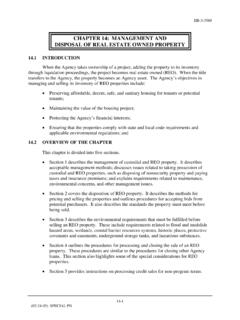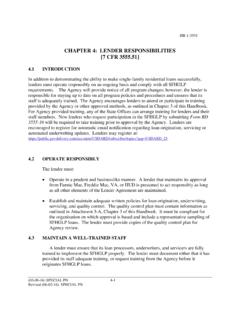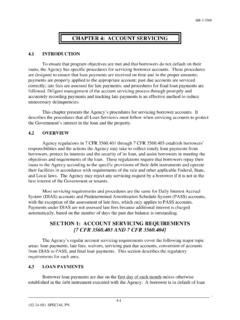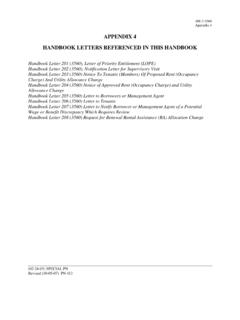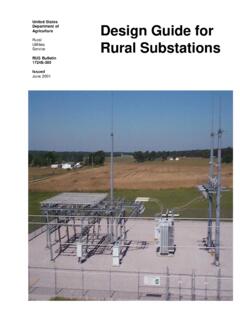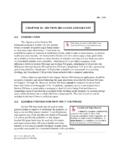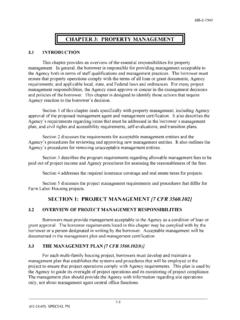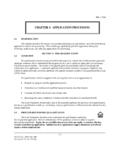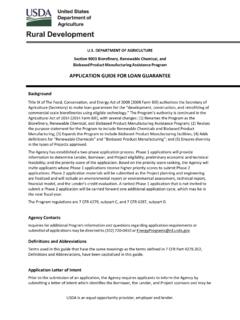Transcription of Understanding Cooperatives: Cooperative Business Principles
1 Understanding Cooperatives: Cooperative Business Principles Cooperative Information Report 45, Section 2. them the right to do Business . They draw A building has a foundation which up bylaws and other necessary legal papers. Members elect a board of direc- supports the rest of the structure. United States tors. The board sets policy and hires a Department of Without it, the building probably manager to run the day-to-day operations. Agriculture But in other ways, cooperatives are dis- would not stand very long. The coop- Rural Development tinctively different from other businesses. erative form of Business also is built These differences are found in the coop- Cooperative erative's purpose, its ownership and con- on a foundation a set of guidelines Programs trol, and how benefits are distributed.
2 That create its uniqueness and These are usually referred to as coopera- August 1994 tive Principles and explain the way a coop- explain the relationship between it Slightly Revised erative operates. April 2011 and its members. These guidelines To understand how Cooperative prin- ciples are defined today, we need to look are referred to as Principles and dis- at their history. tinguish a Cooperative from another kind of Business . History of Cooperative Principles One of the earliest Cooperative businesses was the Rochdale Equitable Pioneers'. Society, founded in England in 1844. The original group consisted of 28 people, This section explains what Cooperative ranging from flannel weavers to shoemak- Principles are, how they evolved, and what ers.
3 They were individual craftsmen or Principles are followed today. entrepreneurs who came together on Toad A Cooperative is defined as a user- Lane to purchase supplies and consumer owned and controlled Business from which goods cooperatively. The original subscrip- benefits are derived and distributed equita- tion was one English pound for one share bly on the basis of use or as a Business of stock. owned and controlled by the people who The Rochdale Society took the best use its services. ideas developed throughout the history of In many respects, cooperatives resem- cooperatives and molded them into one ble other businesses. They have similar set of good Business practices and poli- physical facilities, perform similar functions, cies that, 150 years later, evolved into prin- and must follow sound Business practices.
4 Ciples of cooperatives. These Principles They usually incorporate under State law distinguished cooperatives from non-coop- by filing articles of incorporation, granting erative businesses. 1. The Rochdale Policies and Practices were: A Cooperative practice is an action that Milton said, A good u Open membership. supports, complements, or carries out a u One man, one vote. principle. The practice is particularly impor- principle, not rightly u Cash trading. tant for a Cooperative to achieve success, understood, may prove u Membership education. yet it is not necessarily unique to coopera- u Political and religious neutrality. tives. as harmful as a bad u No unusual risk assumption. principle. u Limited interest on stock. Traditional Principles u Goods sold at regular retail prices.
5 Various writers over the past century or so u Limitation on the number of shares have analyzed and observed the applica- owned. tion of Cooperative Principles . Allowing for u Net margins distributed according to slight differences in terminology, four prin- patronage. ciples emerge from rather lengthy and Although outdated in many respects, diverse lists as being recognized and wide- they are still considered first expressions of ly practiced for nearly 150 years. These are modern Cooperative Principles . more than just good practices, policies, or common sense. They are the Principles Definitions that continue to distinguish a Cooperative Discussion of today's Cooperative princi- from other kinds of Business . They are rec- ples and practices should be prefaced with ognized in Federal and State statutes as a definition of terms: criteria for a Business to qualify as a coop- A Cooperative principle is an underlying erative.
6 Doctrine or tenet that defines or identifies a The four traditional Principles are: distinctive characteristic. It clearly sets the u Service at cost;. Cooperative apart from other businesses. u Financial obligation and benefits propor- (And as Milton said, A good principle, not tional to use;. rightly understood, may prove as harmful u Limited return on equity capital ; and as a bad principle. ) u Democratic control. Service at Cost Members unite in a Cooperative to obtain services otherwise not available, to get quality supplies at the right time, to have access to markets, or for other mutually beneficial reasons. Acting together gives members the advantage of economies of size and bargaining power. The coopera- tive attempts to fulfill member needs at the least possible cost.
7 Determining true costs at the point of transaction, however, is practically impossible. A necessary prac- tice, therefore, is to charge competitive 2. market prices. The objective of generating Democratic Control sufficient income to cover costs and meet One way Cooperative members exercise continuing operating capital needs is criti- control is through voting at annual and cal. The Cooperative 's operations are other membership meetings. Member-own- reduced to an at-cost basis at the end of ers of a Cooperative corporation, in most its fiscal year when surpluses are returned instances, have one vote no matter how to members. much money they have invested in stock or how much they patronize the organization. Financial Obligation and Benefits Propor- Some say the term member control.
8 Tional to Use more accurately describes today's coopera- Members gain both direct and indirect tives than the term democratic control.. benefits from their Cooperative . A direct Member control recognizes that members benefit is an assured source of supply and can control a Cooperative either through markets for their products, which can one vote per member or through a voting directly increase their income. Indirect ben- system that relates to the size of the patron- efits to members are policing the market age each member does with the coopera- of goods and services, leadership devel- tive. Examples of proportional voting are opment, and increasing Business knowl- based on the dollar volume of Business , the edge. How much benefit members receive acres of cropland, or the units of produce from the Cooperative depends on their marketed through the Cooperative .
9 Level of participation. Members may have the privilege of sharing in the benefits of Practices the Cooperative , but also must share in the In addition to operating under these prin- responsibility of providing financing based ciples, cooperatives follow other generic on proportional use or financial losses. practices, many of which are followed by other businesses and organizations. Limited Return on Equity capital Members form a Cooperative to get a ser- Open Membership vice: providing supplies, marketing their This policy is considered a traditional prin- products, or performing specialized func- ciple by food, health, housing, and other tions. The primary purpose in cooperating types of consumer cooperatives. Yet, it is to get a needed service or product, not does not distinguish them from public stock a monetary return on capital investment.
10 Corporations that allow anyone to buy Limiting the payment, if any, for members' stock. Agricultural cooperatives are limited capital used to operate the Cooperative to bona fide farmers, and even some of supports the principle of distributing ben- these have closed membership. The type of efits proportional to use. Cooperative and its purpose will largely The basic idea, however, is that current determine whether it can practice open users finance their Cooperative in propor- membership. tion to use, and that returns to their finan- cial investment are secondary to the value of services received. 3. Continuing Member Education few in number, yet continue to define and Keeping owners educated about what is identify the distinctive characteristics of the Abraham Lincoln happening in their industry is important for Cooperative form of Business in a forward- said, Important any Business , but it is vital in a Cooperative looking manner.
![CHAPTER 14: FUNDING [Official Agency Use Only]](/cache/preview/5/1/5/b/5/3/5/c/thumb-515b535cec62fd2bb25fbb788ef1c7a2.jpg)
